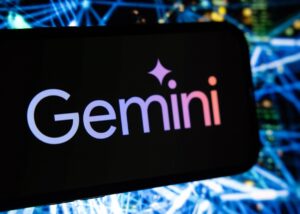Gemini 2.0 Flash by Google Capable of Removing Watermarks

Understanding the Role of Watermarks in Image Protection
Watermarks are those semi-transparent symbols or text that appear on images. They usually look like someone has scattered droplets of water over a photo. While they often detract from the visual appeal of an image, they play a crucial role in protecting the rights of the image owner by asserting copyright.
Why Watermarks Are Important
Watermarks serve several essential functions:
- Copyright Protection: They help indicate ownership, making it easier to identify who created or owns the image.
- Preview Purpose: They allow viewers to examine an image—often a digital copy—without permitting its uncontrolled distribution. Users can see the content but cannot use it freely without permission.
- Deterrent Against Misuse: A visible watermark discourages unauthorized reproduction of images, especially on websites or social media, where content can be easily copied.
Despite their necessity, watermarks often frustrate users who simply want to enjoy or share a beautiful photograph.
The Rise of AI Solutions
With advancements in technology, particularly in artificial intelligence (AI), tools are now available that can potentially remove watermarks from images. These developments have raised eyebrows in the creative community, as creators worry about their rights being undermined.
Google’s Gemini 2.0: An AI Controversy
Recently, Google’s AI tool named Gemini 2.0 attracted attention for its ability to remove watermarks. While some users reported that the tool refused to comply with requests to erase watermarks, others claimed that it readily facilitated such actions. This inconsistency raises serious questions about the role of technology companies in defending copyright protections.
- Easy Access to AI Tools: Users have found that they can access watermark-removal capabilities through platforms like Google’s AI Studio, available to anyone with a Google account.
- Existing Alternatives: Previously, various programs aimed to eliminate watermarks, indicating a persistent market for such capabilities. Unscrupulous users are creative and often seek ways to bypass legal protections.
A Conflict of Interests
The emergence of tools that can easily remove watermarks poses a dilemma not just for content creators but also for companies like Google. As a major player in the technology sector, Google has a vested interest in maintaining the integrity of copyright laws.
- Creative Economy Struggles: Many creators already face challenges in monetizing their work online. The availability of tools that easily strip away watermarks could exacerbate these struggles by encouraging unauthorized use of creative content.
- Legal Implications: With ongoing scrutiny from lawmakers regarding its business practices, Google must carefully navigate the balance between technological innovation and legal responsibility.
The Effects on Creators
For many artists and photographers, watermarks are vital to their livelihood. They provide a way to promote their work while protecting their rights.
The Challenges Ahead
The landscape is rapidly changing, and creators must adapt:
- Finding Balance: Creators need to implement effective branding techniques that can withstand technological advancements.
- Increased Vigilance: With tools like Gemini 2.0 capable of removing watermarks, content creators may need to be more vigilant in monitoring unauthorized use of their work.
- Exploring Alternatives: Artists might consider alternative methods for displaying their work without risking theft, such as using lower-resolution images online.
While the digital world offers new opportunities, it also brings challenges that necessitate a proactive approach to protect creative content.






